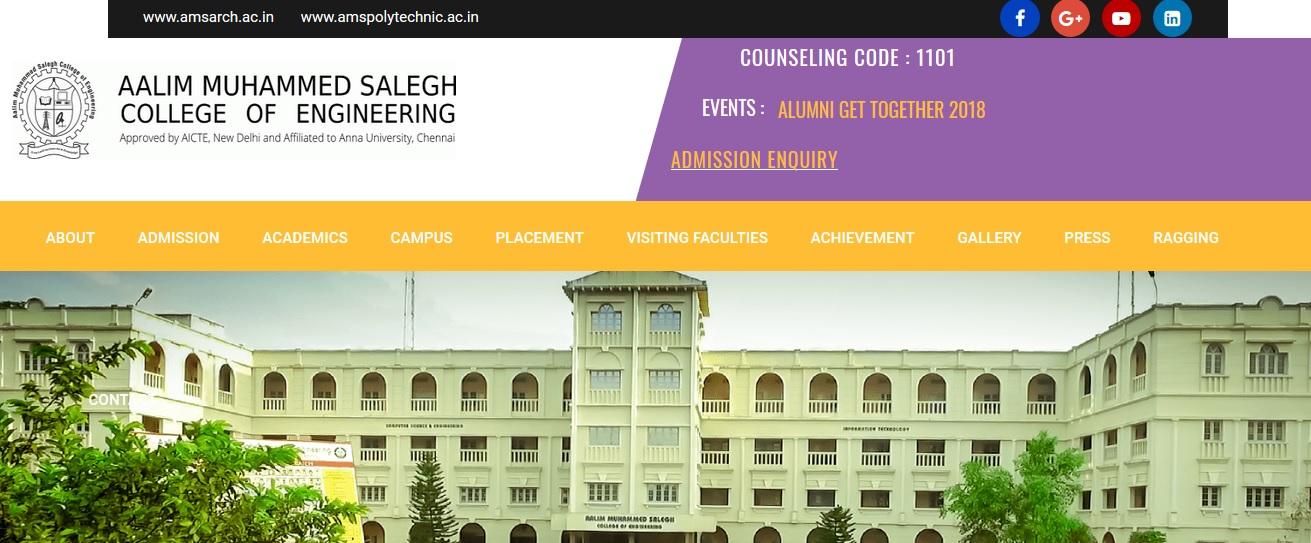MG2351 Principles of Management B.E Model Question Paper : aalimec.ac.in
Name of the College : Aalim Muhammed Salegh College of Engineering
University : Anna University
Department : Electronics and Communication Engineering
Subject Code/Name : MG2351 Principles of Management
Degree : B.E
Year : III
Document Type : Model Question Paper
Website : aalimec.ac.in
Download :https://www.pdfquestion.in/uploads/aa…tion-Paper.pdf
Aalim MEC Principles of Management Question Paper
Model Question Paper 1 :
Unit – I
Part A : (10 X 2 = 20)
1. What is systems approach to management?
2. What are the objectives of planning?
3. What are the elements of business forecasting?
4. What do you mean by Policy?
Related : Aalim Muhammed Salegh College of Engineering EC2351 Measurements & Instrumentation B.E Model Question Paper : www.pdfquestion.in/1649.html
5. What are the functions performed by a low level manager?
6. What are the limitations of quantitative approach to management?
7. What are the differences between formal and informal communication?
8. What do you understand by “over delegation “and “under delegation?”
9. List the steps involved in directing.
10. What are the kinds of skills companies look for in managers?

Part B : (5X16=80)
Answer ALL the questions
11. (a) Explain the principles of administrative theory of management with suitable illustrations.
OR
(b) (i) Discuss in detail about the various types of Organisation Structure. (8)
(ii) Explain the principle of F.W.Taylor Theory. (8)
12. (a) (i) Explain the steps in Planning process. (8)
(ii) Give an account of various steps involved in Decision Making (8)
OR
(b) (i) What do you understand by Management by Objectives. (MBO)
What are its advantages and limitations? (10)
(ii) Compare formal and informal organisations. (6)
13. a. (i) What is span of control? Explain the factors which influence the span of control. (8)
(ii) Explain the process of communication and also explain the barriers to effective Communication. (8)
OR
b. (i) Distinguish between Delegation and Decentralisation. (8)
(ii) Explain the various sources of recruitment. (8)
14. a. (i) Explain the various methods of Training.(8)
(ii) What do you understand by “Leadership style”. Discuss the different types of Leadership styles.
OR
b.(i) Critically examine Maslow’s need priority model. How far up the hierarchical ladder do most people progress? (8)
(ii) Explain Porter and Lawler theory of motivation and Adam’s equity theory of motivation.(8)
15. a. Explain any four non-budgetary control techniques with suitable examples.(16)
OR
b. Explain the steps involved in the quality control process with advantages and disadvantages.(16)
Unit – II
Part A :(10 X 2 = 20)
Answer ALL the questions
1. What are the functions of Management?
2. What is scientific management?
3. What is the main purpose of planning?
4. Define the term strategic planning.
5. Define the term functional authority.
6. What is non-verbal communication?
7. What are the three potential pitfalls of budgets?
8. Define job enlargement.
9. What is division of labour?
10. List the basic types of control.
Part B :(5X16=80)
Answer ALL the questions
11. (a) Explain in detail Henry Fayol’s contribution towards classical approach of Management (16)
Or
(b) (i) Describe the relative importance of each type of the skills to lower, middle and upper level managers.(8)
(ii) Explain the system based approach towards the Management. (8)
12. (a) (i) Discuss the types and steps involved in decision making process.(8)
(ii) Explain the Business Portfolio Matrix (BCG matrix) (8)
Or
(b) Describe in detail the various types of organizational plans. (16)
13. (a) What do you understand by organizational charts? Explain the basis of the Departmentalization. (16)
Or
(b) Discuss the steps involved in providing appropriate human resources. (16)
14. (a) (i) Explain the types of formal organizational communication.(8)
(ii) Discuss the barriers of effective interpersonal communication. (8)
Or
(b) Is Motivation important for organizational development/achievement? Justify your answer with Maslow’s hierarchy of needs. (16)
15. (a) Discuss in detail the tools for organizational control. (16)
Or
(b) Enumerate the various techniques for improving productivity. (16)